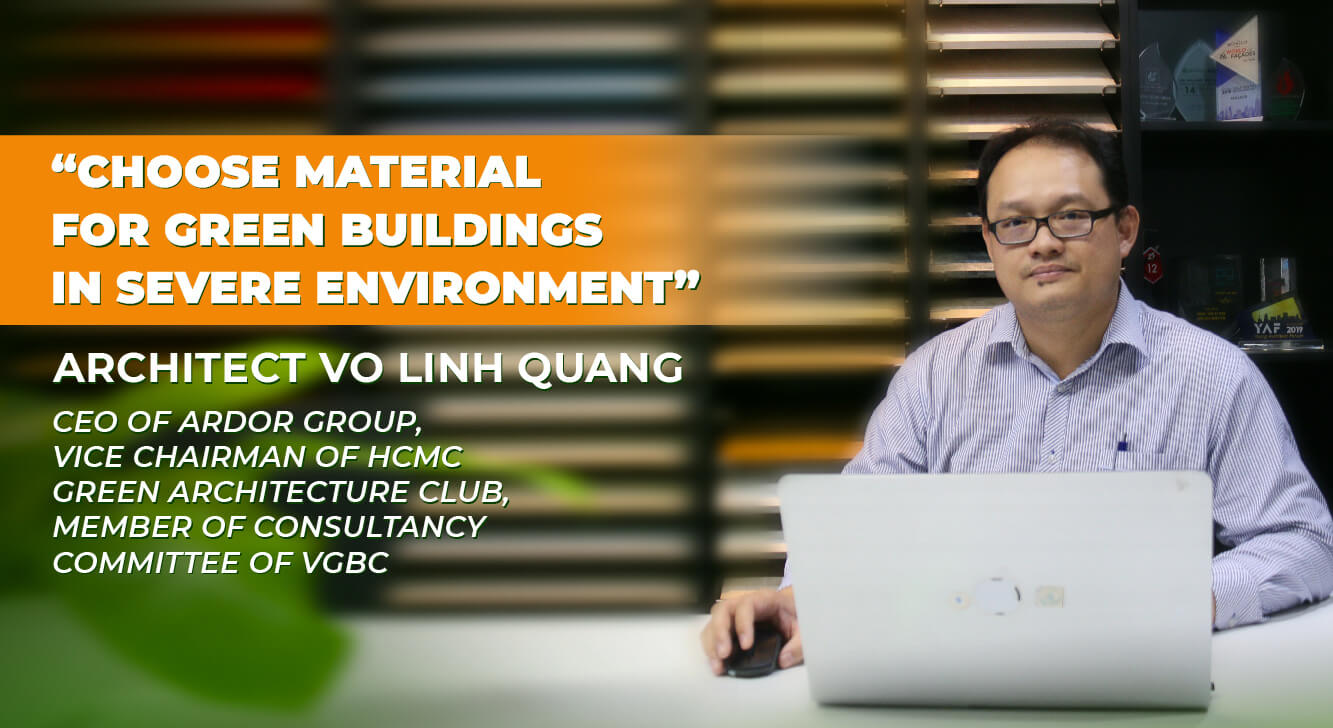


Thus, when the investors reach out to the architects for consultation, they understand the value and lasting benefit of GB. Then architects will advise them with more details, specific evaluation criteria and including cost estimation for GB. However, up to now, the investors who actively build GB often come from projects with a foreign budget because they are obliged to do the environmental protection policy of large international corporations. It is still unpopular for domestic investors to actively consult to implement GB.



In Vietnam, investors do not have any support policies for executing training programs. In developed countries, there is an incentive for GB from the start. For example, in Singapore, the government subsidies the GB pioneers so that they have the capital to invest, and enact a training policy on GB. Meanwhile, in Vietnam, VGBC is still a nonprofit organization, having to pay its staffs monthly and carry out external projects, when there is a no state budget, there is not enough resources to guide and change the construction site in the direction of GB.

When building a GB in severe environments, the difficulty doubles. For example, green architecture must not only consider whether the material has met the green building requirements but also whether it can withstand the environment in the sea or heavy industrial factories. If the materials that meet LEED standards cannot be found or harsh environments, additional criteria are required such as investment in solar battery systems, rainwater reuse systems, or automatic drip landscape irrigation system. If materials that meet LEED standards can be found right away and within the project’s investment budget, GBs will ensure higher certification.

The strictest selection criterion is normally related to the covering. This cover significantly affects the energy efficiency of the building, including the percentage of every window, the insulation parameters of walls, glass, light windows on roofs or all the building materials of that building. For the interior of the building, the criteria include compliance with the content of toxic substances in paints, carpets, adhesives used in interior equipment, or content of recycled components. Typically, the design consultants will prefer to choose the external materials due to having more points which affect the energy consumption of the building.

All GB will usually seek out the material type to meet the SRI (heat reflection index) score for the covering and have U-value (insulation coefficient) then paying attention to color, technology or warranty period. For example, why do architect choose Colorbond® premium coated steel of BlueScope? This is mainly because it cools down the temperature and has a better U-value insulation index and color durability. Besides, the new Activate™ technology with micro-structure of 4 phases has superior corrosion resistance at the cutting edge, screw holes and scratches, thus making the roof and corrugated walls more durable. In particular, as far as I know, Activate™ technology can significantly extend the warranty period of products up to 36 years*, which helps the project greatly increase the life expectancy, which is one of the contributing factors that increase the score for GB. This is one of the very important sustainability factors.


* Warranty terms and conditions apply
Thank you!




Comment